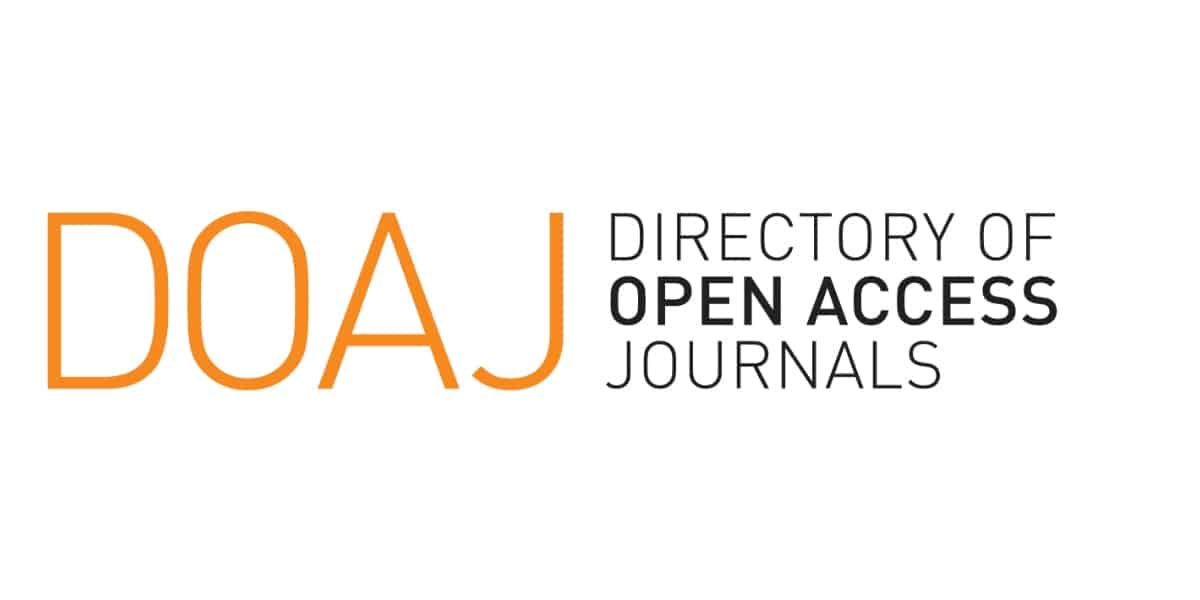Analisis Faktor Kecelakaan dan Keselamatan Kerja Pada Penggunaan Hoist Crane Menggunakan Metode Varimax
Keywords:
keselamatan dan Kesehatan kerja, risiko, faktor manusia, faktor lingkungan, faktor peralatan, hoist crane, varimaxAbstract
Occupational safety and health (OSH) is a critical issue that affects operational performance and sustainability in industry. The use of overhead travelling cranes, while supporting process efficiency, carries a significant risk of occupational accidents. The aim of this study is to analyse the factors influencing occupational accidents and OSH in hoist crane operations using the varimax rotation method. The research data was collected through questionnaires distributed to workers in companies using hoisting cranes. The analysis covered three main aspects: human factors, environmental factors and equipment factors. The results showed that human factors include physical condition, discipline, operator skill and carelessness. Environmental factors included plant layout, communication, cleanliness and site conditions. As for equipment factors, the condition, maintenance, feasibility and completeness of equipment are important aspects that affect work safety. The research found that work accidents can be minimised by focusing on the dominant factors identified. With these findings, the research provides strategic recommendations for companies to systematically manage occupational risks, improve occupational safety and reduce the potential for accidents, particularly in the use of heavy equipment such as hoisting cranes.
References
[1] A. Ardiningrum, F. Fitriyani, and A. Gusti, “Analisis Risiko Keselamatan dan Kesehatan Kerja (K3) pada Bagian Boiler di PLTU Teluk Sirih,” J. Keselam. Kesehat. Kerja dan Lingkung., vol. 4, no. 2, pp. 151–169, 2023, doi: 10.25077/jk3l.4.2.151-169.2023.
[2] F. Fitriyani, N. W. Putri, T. T. Fathul, W. A. Fiqran, and M. Angela, “Identifikasi Bahaya dan Penilaian Risiko Pekerja Industri Mebel Kota Payakumbuh,” J. Keselam. Kesehat. Kerja dan Lingkung., vol. 4, no. 2, pp. 103–112, 2023, doi: 10.25077/jk3l.4.2.103-112.2023.
[3] Kaharto, Kaharto, Yuriatson Yuriatson, and Luana Sasabone. "Optimalisasi Keselamatan Kerja Melalui Pelatihan Keselamatan Kerja." Community Development Journal: Jurnal Pengabdian Masyarakat 5.4 (2024): 7762-7766
[4] R. E. S. Tiurma Elita Saragi, “Keselamatan Dan Kesehatan Kerja (K3) Pada Proyek Pembangunan Rumah Susun Lanjutan Provinsi Sumatera Utara I Medan,” J. Ilm. Smart, vol. III, no. 2, pp. 68–80, 2020, [Online]. Available: https://repository.uhn.ac.id/handle/123456789/5733
[5] E. B. M. Tambunan, D. Sjarifudin, H. Kurnia, and M. R. Mubarok, “Analisis Pengurangan Tingkat Risiko Kecelakaan Kerja pada Proses Pembuatan Konveyor dengan Metode HIRADC,” J. Keselam. Kesehat. Kerja dan Lingkung., vol. 4, no. 2, pp. 136–146, 2023, doi: 10.25077/jk3l.4.2.136-146.2023.
[6] L. T. Dewi and L. V. Pangaribuan, “Studi Kecelakaan Kerja Operator Mesin di Industri Pengolahan Kelapa Sawit: Investigasi dan Analisis Penyebab dengan Metode 5 Whys dan SCAT,” J. Ergon. dan K3, vol. 4, no. 2, pp. 10–16, 2020, doi: 10.5614/j.ergo.2019.4.2.2.
[7] A. D. Prabaswari, M. Maulda, and A. D. Sari, “Analisis Resiko Keselamatan dan Kesehatan Kerja pada Pekerja Bagian Pengemasan Minipack Menggunakan Metode Job Safety Analysis (JSA) pada CV. XYZ,” J. Ergon. dan K3, vol. 2, no. 1, pp. 27–34, 2020, doi: 10.5614/j.ergo.2017.2.1.3.
[8] S. D. Permana and T. Siregar, “Manajemen Risiko Keselamatan dan Kesehatan Kerja pada Perawat Menggunakan Hazard Identification Risk Assessment And Risk Control,” J. Keselam. Kesehat. Kerja dan Lingkung., vol. 4, no. 2, pp. 74–82, 2023, doi: 10.25077/jk3l.4.2.74-82.2023.
[9] E. Erika, E. S. Colia, S. Ramli, and S. Sugiarto, “Hubungan Kepatuhan Penggunaan Alat Pelindung Diri dan Perilaku Keselamatan Kesehatan Kerja dengan Kinerja Karyawan,” J. Keselam. Kesehat. Kerja dan Lingkung., vol. 5, no. 1, pp. 65–75, 2024, doi: 10.25077/jk3l.5.1.65-75.2024.
[10] E. L. PNS, I. AN, and S. Rachmawati, “Keterkaitan Intensitas Kebisingan Lingkungan Terhadap Tingkat Stres Pekerja (Studi Kasus di Industri Kimia Sukoharjo),” J. Keselam. Kesehat. Kerja dan Lingkung., vol. 5, no. 1, pp. 38–47, 2024, doi: 10.25077/jk3l.5.1.38-47.2024.
[11] Meilisa, F. Firdani, and A. Rahman, “Analisis Hubungan Beban Kerja, Stres Kerja dan Status Gizi dengan Tingkat Kelelahan Kerja Pada Perawat,” J. Keselam. Kesehat. Kerja dan Lingkung., vol. 4, no. 1, pp. 40–46, 2023, [Online]. Available: https://www.researchgate.net/publication/369880393_Faktor-Faktor_Yang_Berhubungan_Dengan_Kelelahan_Kerja_Pada_Perawat
[12] I. A. K. P. Mayuni Devi and T. Trianasari, “Analisis Penerapan Keselamatan Dan Kesehatan Kerja (K3) Pada Bagian Laboratorium Di PT Tirta Investama Aqua Mambal (Sebuah Kajian Dari Perspektif Manajemen Sumber Daya Manusia),” Bisma J. Manaj., vol. 7, no. 2, p. 303, 2021, doi: 10.23887/bjm.v7i2.32512.
[13] Fitriyani, A. Gusti, and F. Hermawati, “Analisis Risiko Keselamatan dan Kesehatan Kerja pada Pekerja Industri Batu Bata di Kabupaten Padang Pariaman,” J. Keselam. Kesehat. Kerja dan Lingkung., vol. 04, no. 1, pp. 47–56, 2023.
[14] Buchari and M. Irani, “Analisis Risiko Kecelakaan Kerja pada Stasiun Klarifikasi dengan Metode Analytic Hierarchy Process (AHP) PT Mopoli Raya,” J. Ergon. dan K3, vol. 4, no. 2, pp. 33–38, 2020, doi: 10.5614/j.ergo.2019.4.2.5.
[15] R. Hakim and K. Haryana, “Penerapan Keselamatan Dan Kesehatan Kerja (K3) Pada Praktik Kerja Las Siswa Kelas X Program Keahlian Teknik Kendaraan Ringan Smk Tamansiswa Jetis Yogyakarta,” J. Pendidik. Vokasi Otomotif, vol. 3, no. 2, pp. 9–18, 2021, doi: 10.21831/jpvo.v3i2.40436.
[16] Muhamad, Iqbal, Hana Gumiyarna, and Een Suhaenah. "Analisis Faktor-Faktor yang Memengaruhi Perilaku Penggunaan APD pada Karyawan Bengkel Machining." Jurnal Keselamatan Kesehatan Kerja dan Lingkungan 5.1 (2024): 58-64.
[17] R. A. Yunanto, A. W. Purnama, and M. E. Lestiani, “Analisis Pengaruh Kinerja Program Keselamatan dan Kesehatan Kerja (K3) Dalam Meningkatkan Produktivitas Kinerja di Pelabuhan Patimban,” J. Keselam. Kesehat. Kerja dan Lingkung., vol. 5, no. 2, pp. 111–121, 2024, doi: 10.25077/jk3l.5.2.111-121.2024.
[18] D. D. Atmaja, W. Widowati, and B. Warsito, “Forecasting Stock Prices On The Lq45 Index Using The Varimax Method,” MEDIA Stat., vol. 14, no. 1, pp. 98–107, 2021, doi: 10.14710/medstat.14.1.98-107.
Downloads
Published
Issue
Section
License
Copyright (c) 2024 Akhmad I. Fajar, Rusindiyanto (Author)

This work is licensed under a Creative Commons Attribution 4.0 International License.
















